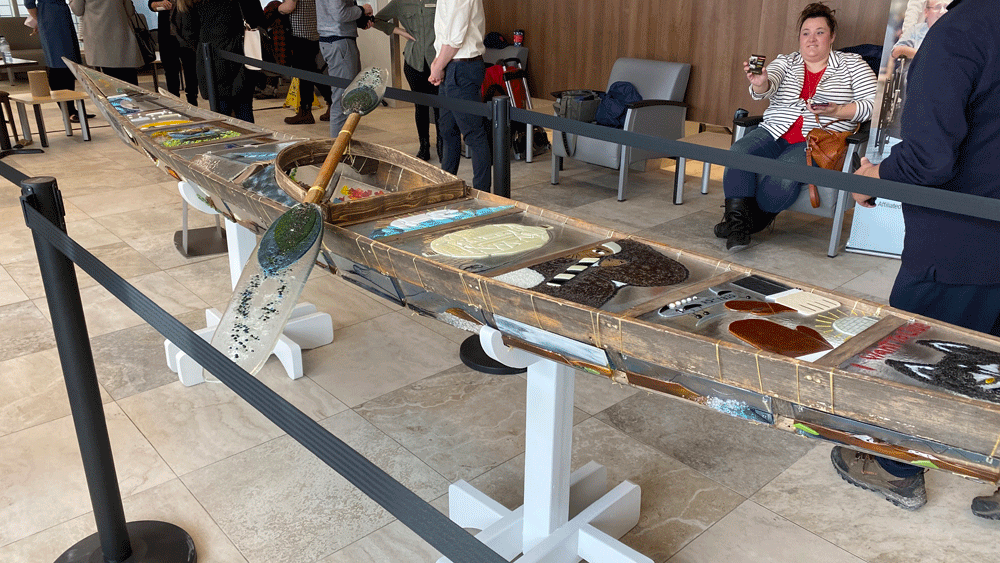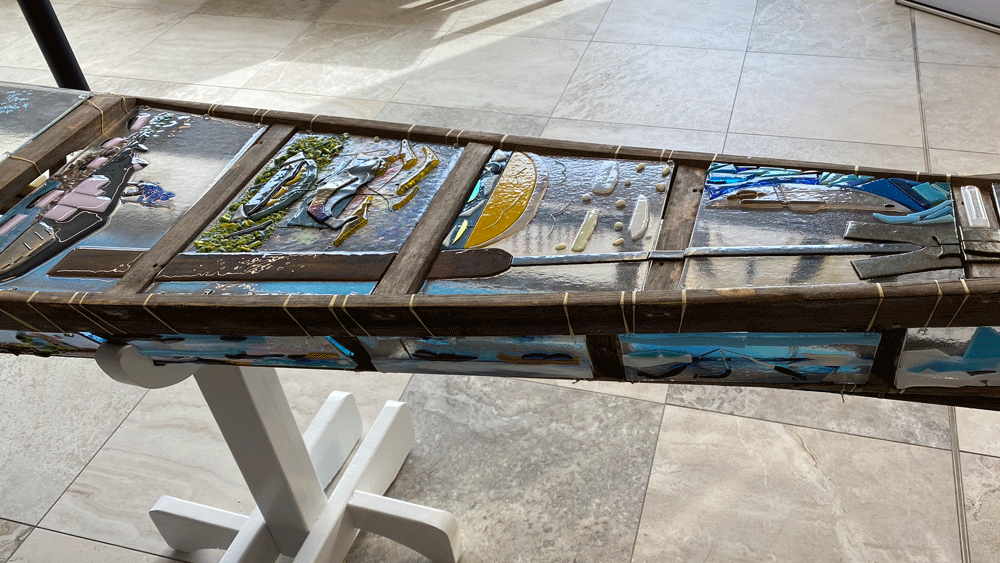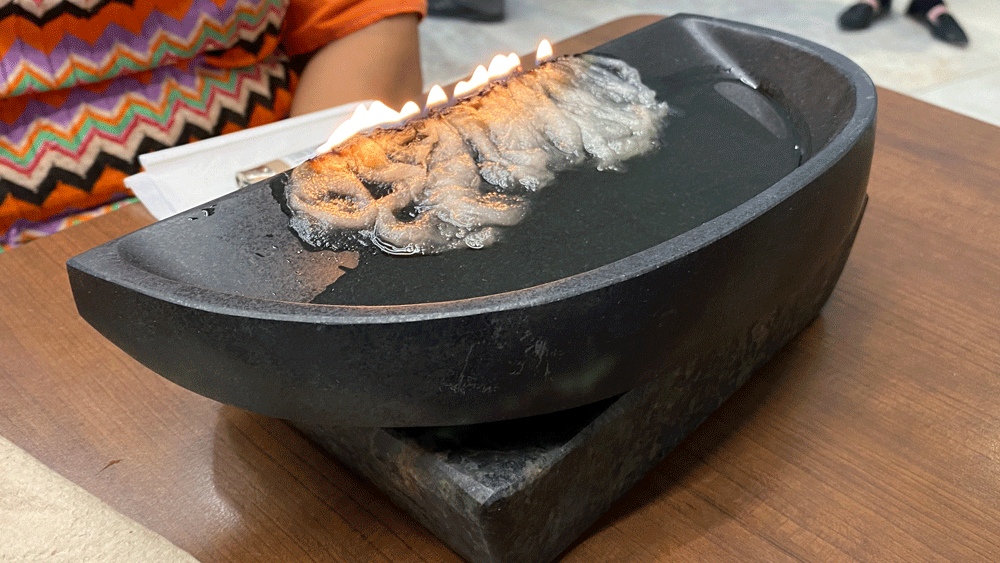
A five-meter-long qajaq with a hand-made wood frame emerges as the cover is pulled back. Instead of sealskin stretched over it, numerous kiln-formed glass panels glitter under fluorescent light, sketching a visual tableau of Inuit history.
This qajaq, also spelled kayak, will never touch water.
But the artists that created it hope it’ll be a vessel that carries them forward on the journey to reconciliation.
“For me the qajaq is a symbol,” says co-artist Kaajuk Kablalik. “One of the symbols is to move forward, because the typical movement of the qajaq is forward. It is also a symbol of hope because traditionally they were used in hunts, and hunting is sustenance for our people.
“So it’s a symbol of hope and it’s a symbol of moving forward for me.”
Hence the project’s title: Sivuniksattinu. It means ‘for our future’ in Inuktitut, he says.
Kablalik and three other artists spent two years meticulously crafting intricate glass panels and binding them to the wood.
He says he feels “phenomenal” now that it’s finally found a home just inside the main entrance of the Ottawa General Hospital, where symbols of hope are often needed.
Hope is one of many reasons Inuit seek out life in the nation’s capital. Hope for more opportunity, education, employment, and access to healthcare.
Katherine Cotton, chair of the board of governors at the hospital, says the hospital served 1,500 clients last year from the Baffin region alone.
Though the census enumerates less than 2,000 Inuit in the nation’s capital, Cotton says this number is closer to 5,000.
Others say as many as 7,000 Inuit call Ottawa home.
It should also feel like home, says Cotton. “It’s a different environment that they come into. So, what we do at the hospital is our staff try to create something of a home away from home for those patients, and by coming in the doors and seeing a very compelling piece that they can relate to, we hope that goes some measure of the distance in doing that.”
The project resulted from a partnership between Arts Network Ottawa and Tungasuvvingat Inuit, a provincial services provider. Jennifer Kelly, Melissa Attagutsiak, and Alexander Angnaluak were the other co-artists.
Though it looks to a bright future, the new permanent art installation chronicles a dark past, which Angnaluak says is part of the reconciliation process.
“We shine a light on our history, so it’s Canadian history, not just Indigenous history,” says Angnaluak.
“It’s the dark things that happened to us in the past.”

The panels on the qajaq’s back half begin with a huskie, which Angnaluak says symbolizes the “dog slaughter” where the RCMP killed Inuit sled dogs in the 1950s and onward. The next panel shows a child being taken from a shining igloo and placed on an airplane going to a residential school.
But the front half transitions into brighter images of tradition and resilience: a successful hunt, the light of a burning qulliq, and an Inuk homestead resting in the sun on a clear day.
Angnaluak walks past the panels describing each one. He stops and focusses on one that depicts the harvesting of a bowhead whale, which he made. He smiles and raises his hands in the air when discussing the magnitude of a successful bowhead hunt.
“It’s a very communal event and it’s a time of rejoicing. It’s when the community gets together and they harvest an entire bowhead. It’s not one person’s job. You can see the people in the back. They all line up. They all take their part and they all do their part in order to butcher an entire animal,” he says.
“It’s like a 30-foot whale, and you can stand inside its stomach, you can stand inside its heart. So, it’s massive. It’s not one person’s task to take these things down. It’s a very rich moment for communities.”

The lit qulliq on one of the front panels is a particularly apt visual symbol.
Prior to the unveiling, Elder Aigah Attagutsiak lit an oil lamp of her own, telling the assembled crowd about its ongoing significance in her own life.
“When I was growing up that was the only resource we used for cooking, light, heat – and even up to now I still have a mother and she’s turning 100, and she’s still using these qulliq to heat the little hut, and to cook and to make bannock, and she has a net above it with a chain that has [a] hook to put the pot above it.”
Attagutsiak is also an ordained priest at St. Margaret’s Anglican Church in Ottawa’s Vanier neighborhood, where many Inuit live.
She said a prayer in Inuktitut to bless the new qajaq. Her qulliq – a symbol of resilience and cultural continuity – burned throughout the unveiling.










Great article on this kayak and nice that it’s at a hospital in Ottawa, where hope is always needed.